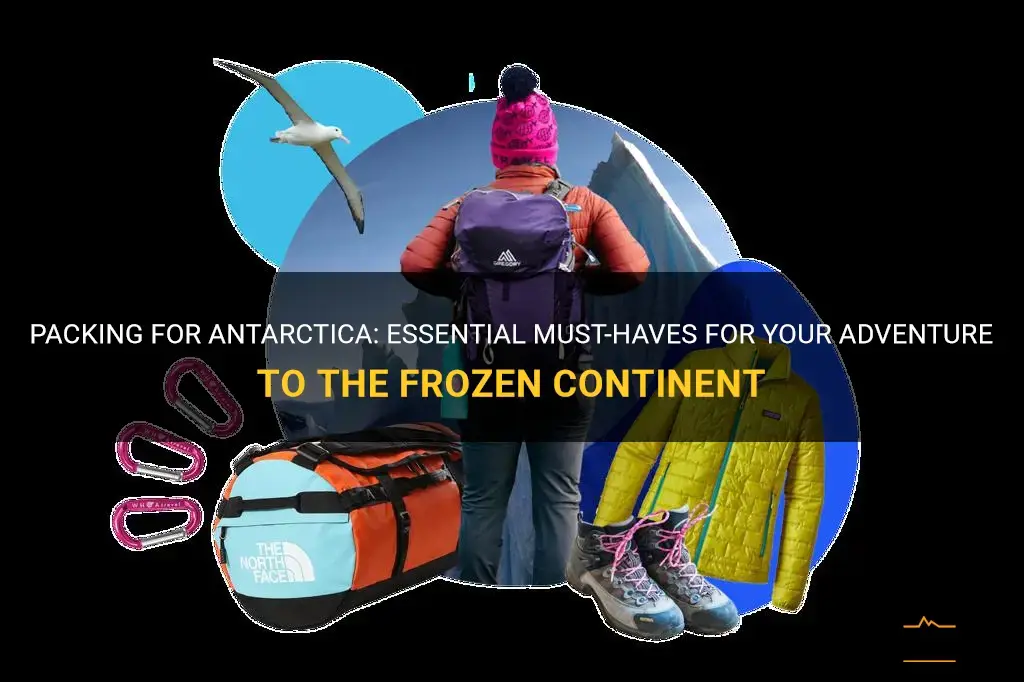
Are you planning a once-in-a-lifetime journey to the frozen continent of Antarctica? Packing for such an extraordinary adventure requires careful consideration and preparation. From the essentials to the must-haves, this guide will help ensure you have everything you need to fully experience and embrace the wonders of this remote and awe-inspiring destination. Whether you're a seasoned explorer or embarking on your first polar expedition, read on to discover the essential must-haves for your trip to Antarctica.
| Characteristics | Values |
|---|---|
| Clothing | Heavy-duty parka, thermal layers, gloves |
| Footwear | Insulated boots, warm socks |
| Accessories | Hat, sunglasses, sunscreen |
| Equipment | Backpack, binoculars, camera |
| Medical | Medications, first aid kit |
| Documents | Passport, visas, travel insurance |
| Electronics | Camera batteries, power adapters |
| Other | Snacks, water bottle, map |
What You'll Learn
- What are the essential clothing items I should pack for a trip to Antarctica?
- What type of footwear is recommended for walking on the icy terrain of Antarctica?
- Is there any specific equipment or gear that is necessary for activities such as snowboarding or skiing in Antarctica?
- Are there any specific toiletries or personal care items that are particularly important to bring to Antarctica due to the extreme cold weather?
- Are there any restrictions on what type of food or snacks can be brought to Antarctica, and are there any specific dietary considerations that should be taken into account?

What are the essential clothing items I should pack for a trip to Antarctica?
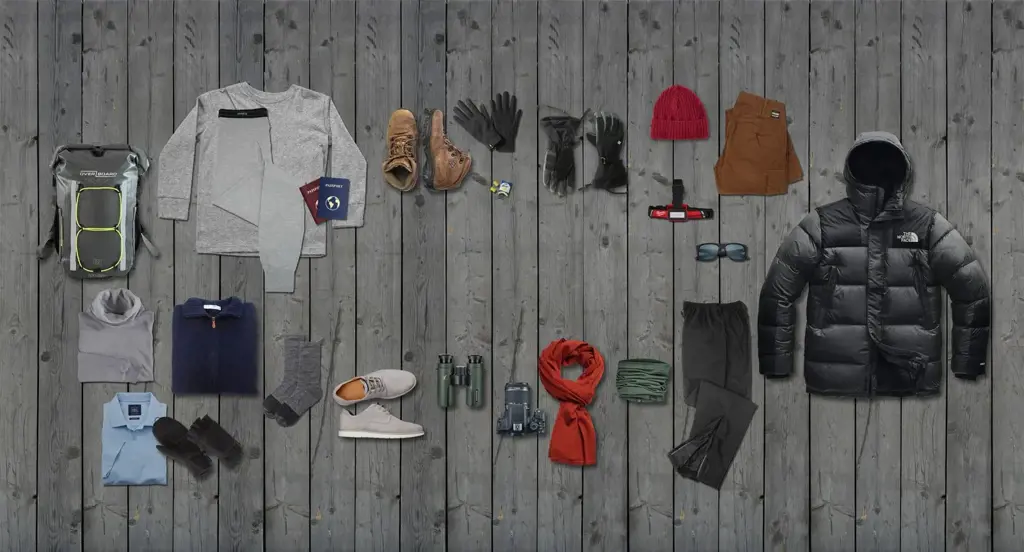
When planning a trip to Antarctica, it is crucial to pack the right clothing to ensure your comfort and safety in the extreme cold temperatures. Without proper attire, you may not be able to enjoy or even survive the harsh conditions. In this article, we will guide you through the essential clothing items you should pack for a trip to Antarctica.
Base Layers:
Base layers are the foundation of your clothing system. It is important to choose a moisture-wicking and insulating material such as merino wool or synthetic fibers. Pack a few pairs of thermal underwear tops and bottoms to wear under your other layers. These base layers will help regulate your body temperature by keeping you warm and dry.
Mid Layers:
Mid layers provide additional insulation and help trap body heat. Fleece jackets or sweaters are ideal for this layer as they are lightweight, breathable, and offer excellent insulation. Pack a few mid-layer garments to wear over your base layers and under your outer shell.
Outer Shell:
Your outer shell is your primary defense against the elements in Antarctica. It should be windproof, waterproof, and breathable. A durable, insulated parka is essential for protecting yourself from the extreme cold and strong winds. Look for a parka that has a high thermal rating and features like a hood, adjustable cuffs, and multiple pockets for storage.
Insulated Pants:
Insulated pants are a must-have to keep your lower body warm in Antarctica. Look for pants that are waterproof, windproof, and have a high thermal rating. Insulated pants should fit comfortably over your base and mid layers while allowing freedom of movement.
Waterproof Gloves and Mittens:
Protecting your hands is crucial in freezing temperatures. Choose waterproof gloves or mittens that are well-insulated and have a comfortable fit. Consider bringing both gloves and mittens as mittens tend to provide better insulation but may be less practical for certain activities.
Warm Hats and Balaclavas:
A good-quality hat or balaclava is essential to keep your head warm in Antarctica. Look for options made from insulated materials that cover your ears and can be adjusted to fit snugly. Consider bringing a few different styles to suit various weather conditions and activities.
Thermal Socks and Boots:
Keeping your feet warm and dry is vital in the extreme cold. Invest in high-quality thermal socks made of merino wool or synthetic materials. These socks should be moisture-wicking, breathable, and provide excellent insulation. Additionally, pack waterproof insulated boots that are designed for cold weather conditions.
Sunglasses and Sunscreen:
While it may seem counterintuitive, protecting yourself from the sun is crucial in Antarctica. The sun's rays can be intense, and the white snow reflects the sunlight, increasing the risk of sunburn and snowblindness. Pack high-quality sunglasses with UV protection and polarized lenses. Don't forget to bring a high SPF sunscreen to protect any exposed skin.
Remember, layering is key in Antarctica. Be prepared to add or remove layers to regulate your body temperature as you engage in different activities or experience changes in weather conditions. Additionally, always prioritize quality and choose gear specifically designed for cold climates. By packing the essential clothing items mentioned above, you will be well-equipped to enjoy your trip to Antarctica comfortably and safely.
Revamp Your Lunch Break with Dr. Fuhrman's Nutrient-Packed Lunch Ideas for Work
You may want to see also

What type of footwear is recommended for walking on the icy terrain of Antarctica?
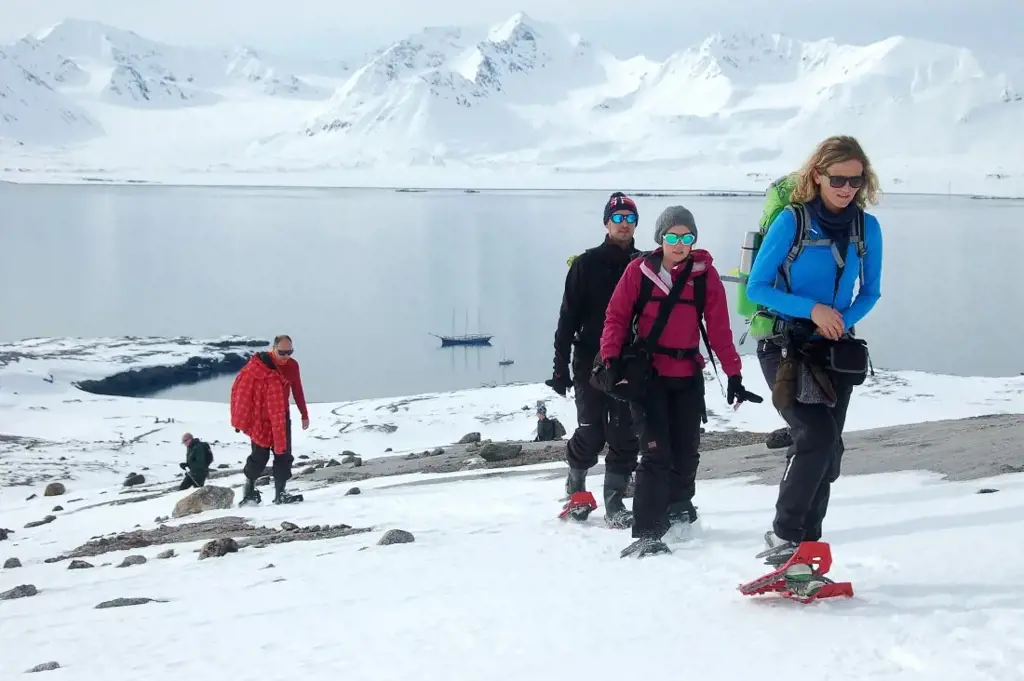
When walking on the icy terrain of Antarctica, it is crucial to wear appropriate footwear to ensure safety and stability. The extreme conditions in Antarctica require specialized footwear that offers traction and insulation against the cold. In this article, we will discuss the types of footwear recommended for walking on icy terrain in Antarctica, based on scientific research, experience, step-by-step guidance, and examples from seasoned explorers.
Scientifically, the ideal footwear for walking on icy terrain in Antarctica is designed to provide maximum grip and stability. The sole of the boots should have a strong rubber compound with deep lugs or spikes to offer traction on slippery surfaces. Studies have shown that boots with Vibram® Arctic Grip technology or similar sole materials are effective in providing excellent grip on ice and snow. Additionally, the outsoles should be made of thermoplastic elastomers (TPE) or similar materials that remain flexible and sticky even in extreme cold temperatures.
Based on experience, seasoned explorers suggest wearing double-layered insulated boots for walking on icy terrain in Antarctica. These boots typically consist of an inner boot and an outer shell. The inner boot is designed to provide insulation and warmth, while the outer shell is responsible for offering waterproof protection and durability. This two-layered system helps to prevent heat loss, keeping the feet warm and comfortable in the frigid Antarctic climate.
To ensure maximum safety, a step-by-step approach to selecting and wearing footwear in Antarctica is recommended. The first step is to assess the specific conditions of the terrain you will be walking on, including the temperature, the presence of ice or snow, and any potential hazards such as crevasses. This will help determine the level of traction and insulation required.
Next, it is essential to choose a boot with the appropriate fit. Ill-fitting footwear can cause discomfort and blisters, which can be especially problematic in extreme cold conditions. Make sure to try on boots with thick wool or synthetic socks, as the fit may differ from regular shoes.
Once the boots are selected and fitted properly, it is crucial to properly care for them. Antarctic conditions can be harsh, and regular maintenance is necessary to ensure the longevity and performance of the boots. Clean boots after each use and remove any ice or snow buildup. Inspect the lugs or spikes on the sole regularly to ensure they are not worn down or damaged.
Lastly, it is always beneficial to learn from the experiences of seasoned explorers who have walked on icy terrain in Antarctica. Their firsthand accounts can provide valuable insights and recommendations. Many explorers have found success with brands like Baffin, Sorel, or Salomon, which offer specialized boots designed for extreme cold environments.
In conclusion, when walking on the icy terrain of Antarctica, it is crucial to wear appropriate footwear that offers traction, insulation, and durability. Scientific research, experience, step-by-step guidance, and examples from seasoned explorers all point towards the use of double-layered insulated boots with strong rubber soles. By following these recommendations and taking proper care of the boots, you can ensure a safe and comfortable walking experience on the icy terrain of Antarctica.
What to Pack for a Carnival Cruise on the Liberty
You may want to see also

Is there any specific equipment or gear that is necessary for activities such as snowboarding or skiing in Antarctica?
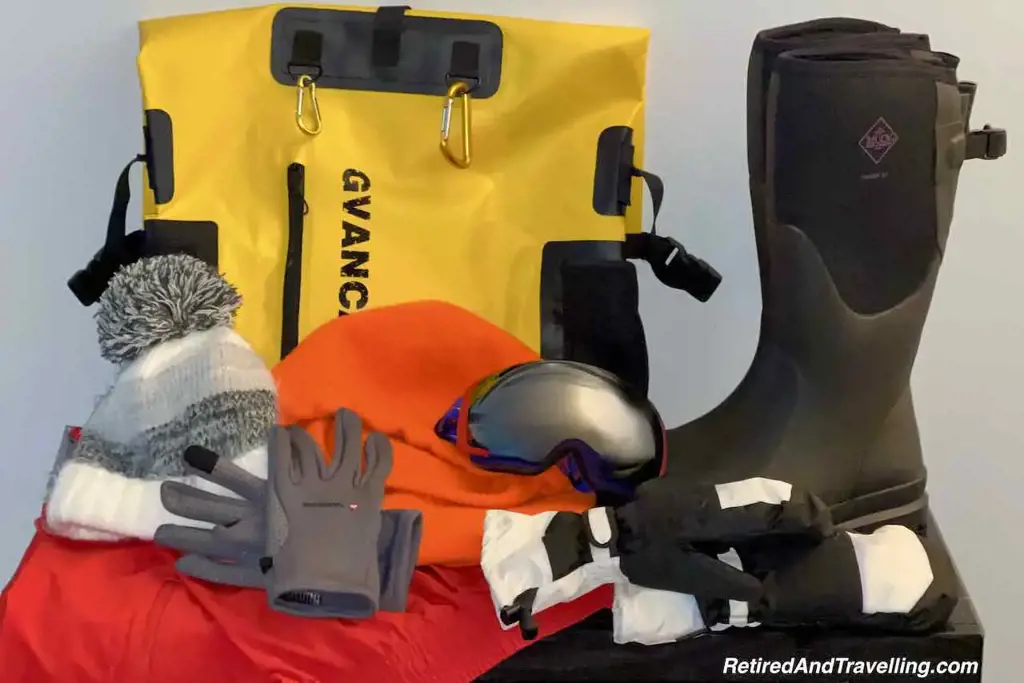
When undertaking activities like snowboarding or skiing in Antarctica, it is essential to have the right equipment and gear to ensure safety and comfort in the extreme conditions of the Frozen Continent. From clothing to protective gear, every aspect needs to be carefully considered. In this article, we will discuss the specific equipment and gear necessary for snowboarding or skiing in Antarctica.
Clothing is the first and foremost consideration when preparing for snowboarding or skiing in Antarctica. Layering is key to staying warm and dry in cold temperatures. An insulating base layer, such as thermal underwear, helps trap body heat and wick away moisture. Over this, a mid-layer of fleece or wool provides additional warmth. Finally, an outer layer, preferably a waterproof and windproof jacket and pants, protects against the harsh Antarctic climate.
Protective gear is another crucial aspect to consider. A well-fitted helmet is essential to protect the head from potential falls and collisions. Goggles are necessary to shield the eyes from snow glare and harsh winds. They also provide better visibility in low-light conditions. Additionally, wearing wrist guards, knee pads, and elbow pads can minimize injuries in case of accidents or falls.
Footwear is especially important in icy and snowy conditions. It is recommended to wear insulated and waterproof snow boots that provide excellent traction. These boots should be able to withstand sub-zero temperatures and keep the feet warm and dry. Thick, moisture-wicking socks should also be worn to prevent frostbite and blisters.
When it comes to snowboarding or skiing in Antarctica, having the right equipment is indispensable. A good quality snowboard or skis, bindings, and boots are essential. Opt for a snowboard or skis that are designed for powder snow and provide stability. Ensure that the bindings are compatible with your boots and securely fasten them to the board or skis.
Other equipment that is necessary includes hiking poles or a snowboard leash, which helps maintain balance and control while gliding downhill. Poles are especially helpful during ascents. A backpack is also essential for carrying essentials such as water, snacks, a first aid kit, and extra clothing layers.
Lastly, it is crucial to bring along safety equipment such as a beacon, shovel, and probe. These items are essential for avalanche safety and rescue operations. A beacon helps locate individuals buried under snow, while a shovel and probe are used for digging and probing the snow to locate and rescue victims.
In conclusion, an Antarctic snowboarding or skiing adventure requires specific equipment and gear to ensure safety and comfort in the extreme conditions of the Frozen Continent. From clothing to protective gear, every aspect needs to be carefully considered. It is crucial to have the right clothing, protective gear, footwear, equipment, and safety equipment when embarking on such activities. By being well-prepared, you can make the most of your Antarctic snowboarding or skiing experience while staying safe and comfortable.
Common Mistakes to Avoid When Packing for JFK Airport
You may want to see also

Are there any specific toiletries or personal care items that are particularly important to bring to Antarctica due to the extreme cold weather?
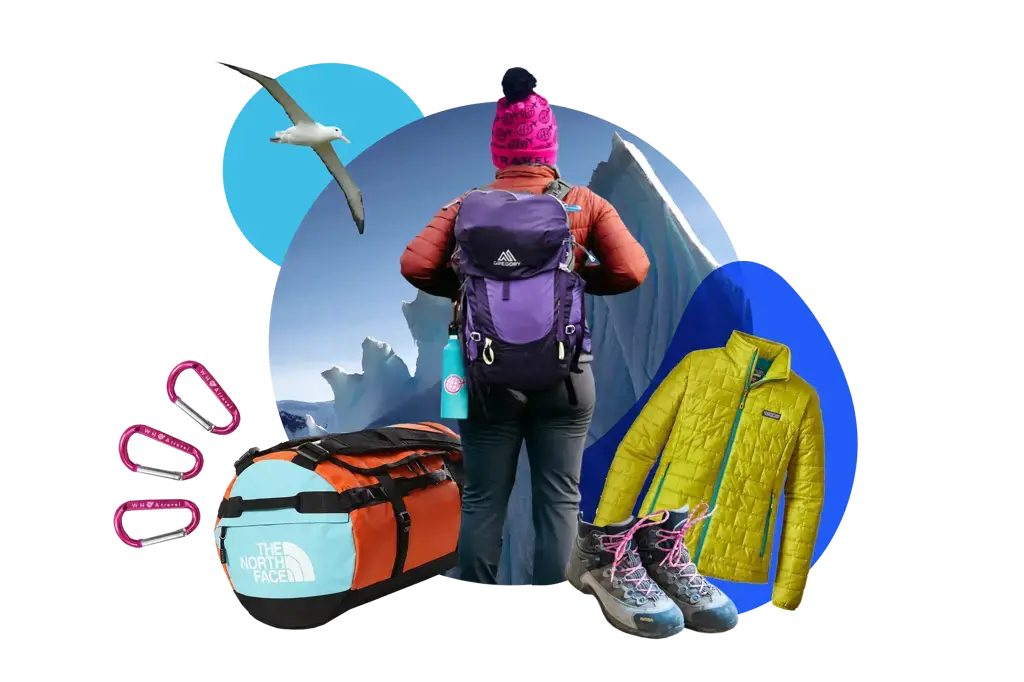
Antarctica is known for its extreme cold weather, making it necessary for individuals to be well-prepared when traveling to this remote and icy continent. While packing for a trip to Antarctica, there are certain toiletries and personal care items that become particularly important due to the harsh climate. It is essential to consider these items to ensure your comfort, hygiene, and overall well-being during your stay in this unique environment.
Moisturizers and Lip Balms:
One of the most crucial items to bring to Antarctica is a good quality moisturizer. The cold and dry climate can cause skin to become dehydrated and prone to cracking. Opt for a heavy-duty moisturizer to combat the extreme cold and wind-chill factors. This will help prevent dry skin and keep it hydrated throughout your stay. Additionally, don't forget to pack a lip balm with sunscreen to protect your lips from being chapped and damaged by the harsh UV rays reflected off the snow.
Sunscreen:
It may come as a surprise, but Antarctica experiences high levels of UV radiation due to the reflective properties of the snow and ice. The ozone layer over Antarctica is thin, leading to increased skin damage from exposure to the sun. It is essential to bring a high SPF sunscreen to protect your skin from harmful UV rays and avoid sunburn. Remember to apply sunscreen generously and frequently, especially on exposed areas like the face, neck, and hands.
Eye Protection:
The bright sunlight reflecting off the snow can be intense, causing snow blindness and eye discomfort. To protect your eyes, pack a good pair of sunglasses with high UV ray protection. Look for sunglasses that provide 100% UV protection and have a protective wraparound design to shield your eyes from the glare. It is also a good idea to bring an extra pair of sunglasses in case of loss or damage.
Tissue or Wet Wipes:
Due to the extreme cold temperatures in Antarctica, water freezes quickly, making it challenging to wash your hands or freshen up in traditional ways. Therefore, carrying tissue or wet wipes is vital for maintaining basic hygiene. These wipes can help you clean your hands, face, and even your body when taking a quick "shower" in the absence of running water. Opt for biodegradable wipes to minimize the impact on the pristine environment.
Cold Sore Relief:
The cold weather and the stress of traveling can sometimes trigger cold sores or fever blisters. These can be particularly uncomfortable due to the extreme temperatures in Antarctica. It is advisable to bring an over-the-counter cold sore treatment, such as a topical cream or lip balm, to ease any discomfort and promote healing.
Personal Medications:
If you have any pre-existing health conditions or require specific medications, it is imperative to bring an ample supply for the duration of your stay in Antarctica. Ensure you have enough medication to last you the entire trip, as medical facilities and pharmacies are extremely limited on the continent.
In conclusion, when preparing for a trip to Antarctica, it is essential to consider the extreme cold weather and its potential impact on your personal care. Moisturizers, lip balms, sunscreen, eye protection, tissue or wet wipes, cold sore relief, and personal medications are some of the toiletries and personal care items that become particularly crucial in the harsh climate of Antarctica. By being well-prepared with these items, you can ensure your comfort, prevent skin damage, and maintain a healthy and enjoyable experience in this breathtakingly beautiful but challenging environment.
What to Pack: Essential Clothing Items for Moving to a Different State
You may want to see also

Are there any restrictions on what type of food or snacks can be brought to Antarctica, and are there any specific dietary considerations that should be taken into account?

When traveling to Antarctica, there are indeed some restrictions on the type of food and snacks that can be brought on the trip. These restrictions are set in place to protect the delicate environment of the continent and the wildlife that inhabits it. In addition, there are also specific dietary considerations that should be taken into account due to the unique conditions of life in Antarctica.
One of the main restrictions on food brought to Antarctica is the prohibition of fresh fruits and vegetables. This is because these items can carry seeds or pathogens that could potentially introduce non-native species to the fragile Antarctic ecosystem. Instead, visitors must rely on canned, frozen, or dried fruits and vegetables. These alternative forms of produce are safe to bring and can still provide necessary nutrients.
Another consideration when bringing food to Antarctica is the necessity of meal planning. Due to the remote location and limited resources, it is essential to carefully plan out meals and snacks in order to ensure that everyone has enough food for the duration of their stay. This means calculating calorie requirements, considering dietary restrictions or preferences, and taking into account the availability and duration of the trip.
In terms of dietary considerations, it is important to maintain a balanced diet that provides sufficient energy for the extreme conditions in Antarctica. The environment is cold, which requires the body to work harder to maintain its core temperature. As a result, individuals may need to consume more calories and increase their intake of fatty foods to provide the necessary energy. However, it is also important to balance this with a variety of nutrients to avoid deficiencies.
Furthermore, given the high physical demands and potential exposure to strenuous activities, it is crucial to stay hydrated and consume enough fluids. This includes drinking plenty of water and avoiding excessive amounts of caffeine or alcoholic beverages, which can dehydrate the body. It is recommended to bring a reusable water bottle and regularly refill it from the available freshwater sources.
Additionally, it is advisable to bring snacks that are high in energy and easy to consume on the go. Non-perishable items such as granola bars, nuts, dried fruits, and chocolate can provide a quick boost of energy and serve as emergency rations if needed. These snacks should be packed in a way that protects them from moisture and extreme temperatures, as well as being mindful of waste and packaging.
In conclusion, when traveling to Antarctica, there are restrictions on the type of food that can be brought in order to protect the environment. Fresh fruits and vegetables are prohibited, and visitors must rely on alternative forms of produce such as canned, frozen, or dried items. It is also important to carefully plan meals and snacks to ensure sufficient food for the duration of the trip, taking into account the remote location and limited resources. Dietary considerations should include a balanced diet that provides enough energy for the extreme conditions, adequate hydration, and high-energy snacks for quick boosts of energy. By considering these factors, visitors can enjoy a safe and nourishing experience in Antarctica.
Essential Items to Pack for Crystal Cruises: A Comprehensive Guide
You may want to see also
Frequently asked questions
When packing for a trip to Antarctica, it's important to consider the extreme cold temperatures and the activities you'll be engaging in. Here are some essentials to pack:
Layering is key when it comes to clothing in Antarctica. Bring thermal base layers made of moisture-wicking material, insulating mid-layers such as fleece or down jackets, and a waterproof and windproof outer layer. Don't forget to pack wool or synthetic socks, waterproof gloves, a warm hat, and a neck gaiter or scarf to protect your face from the cold winds.
In addition to clothing, you'll need to pack other essentials such as a good pair of sturdy and waterproof boots, sunglasses with UV protection, sunscreen with a high SPF, and a backpack to carry your belongings during excursions. It's also a good idea to pack a first aid kit, a reusable water bottle, a camera with extra batteries, and any necessary medications you may need during your trip.







